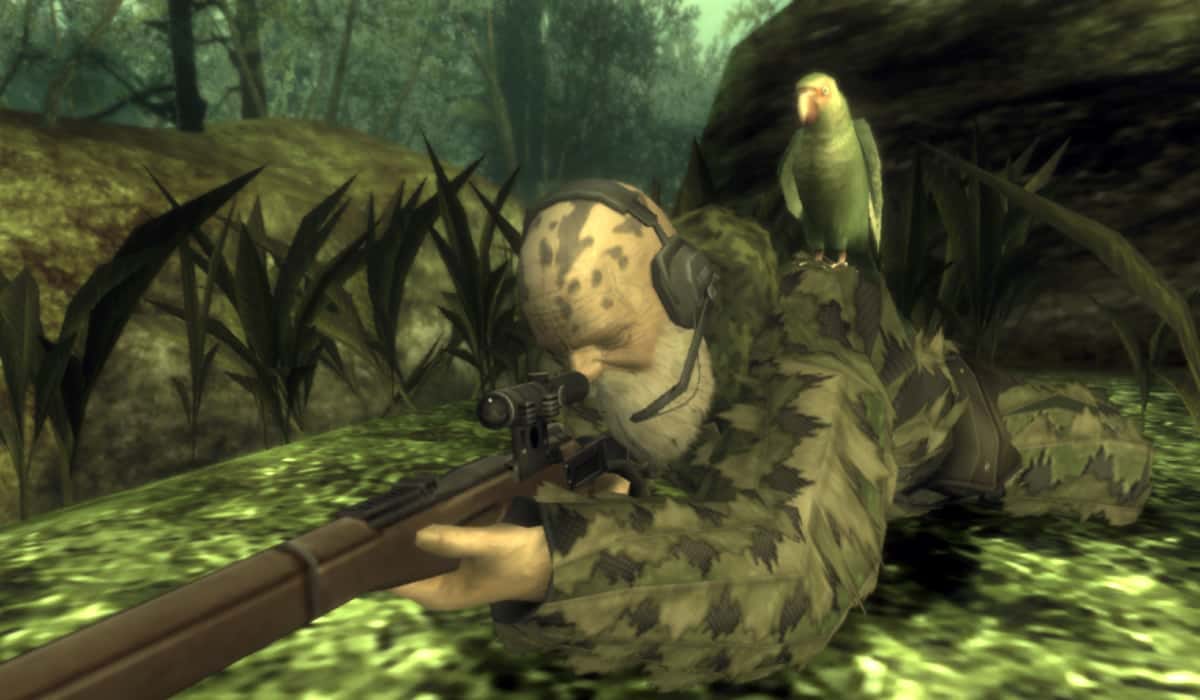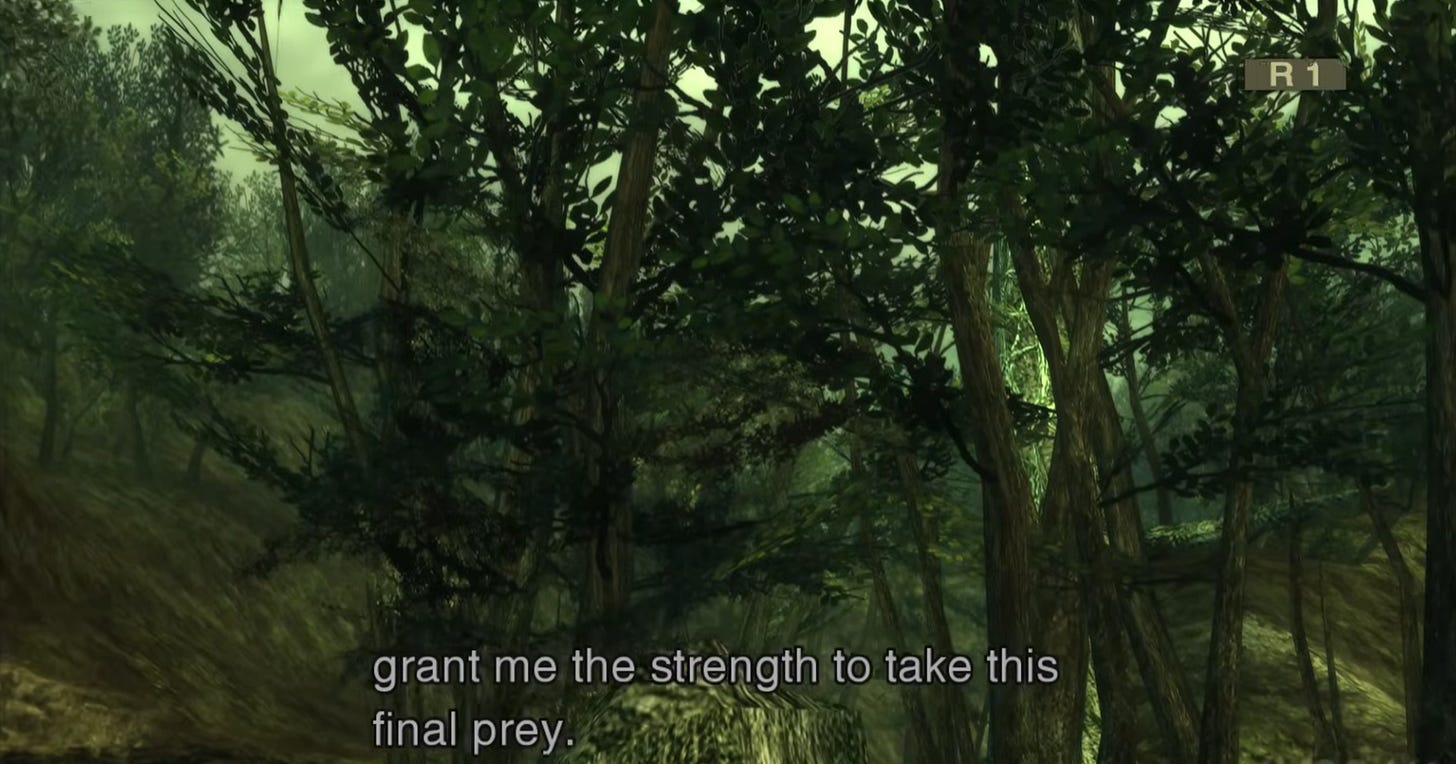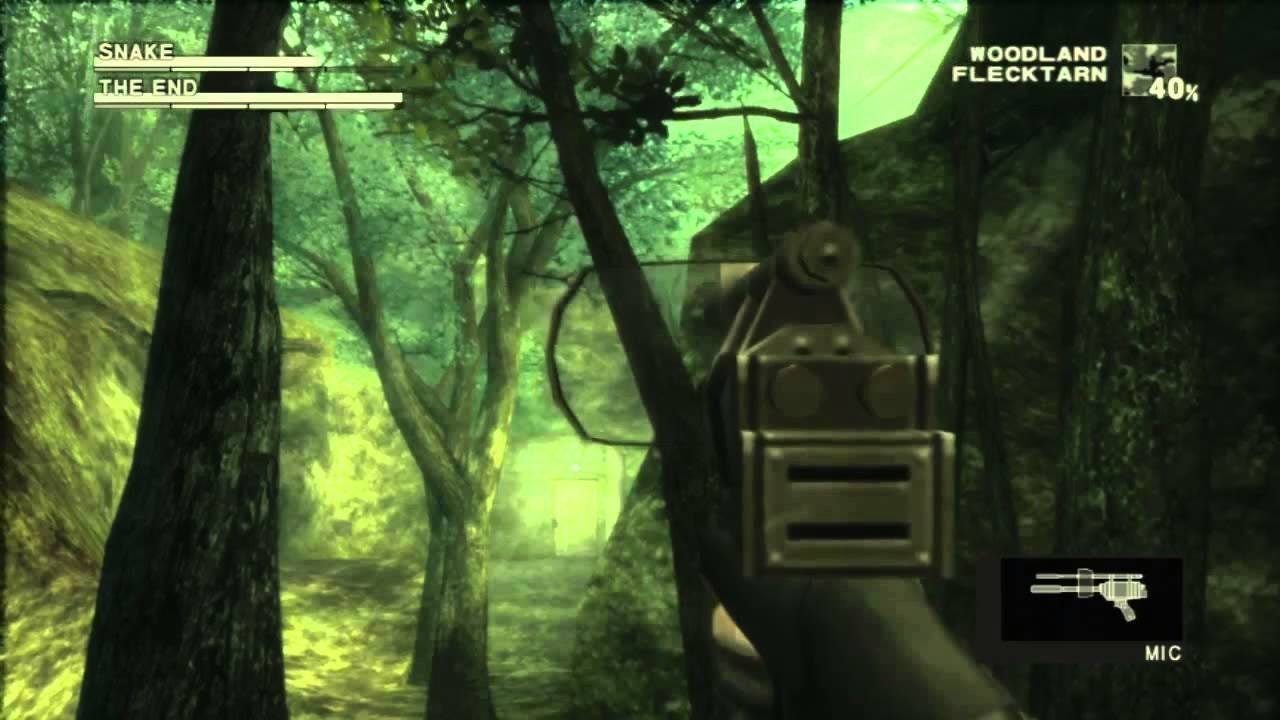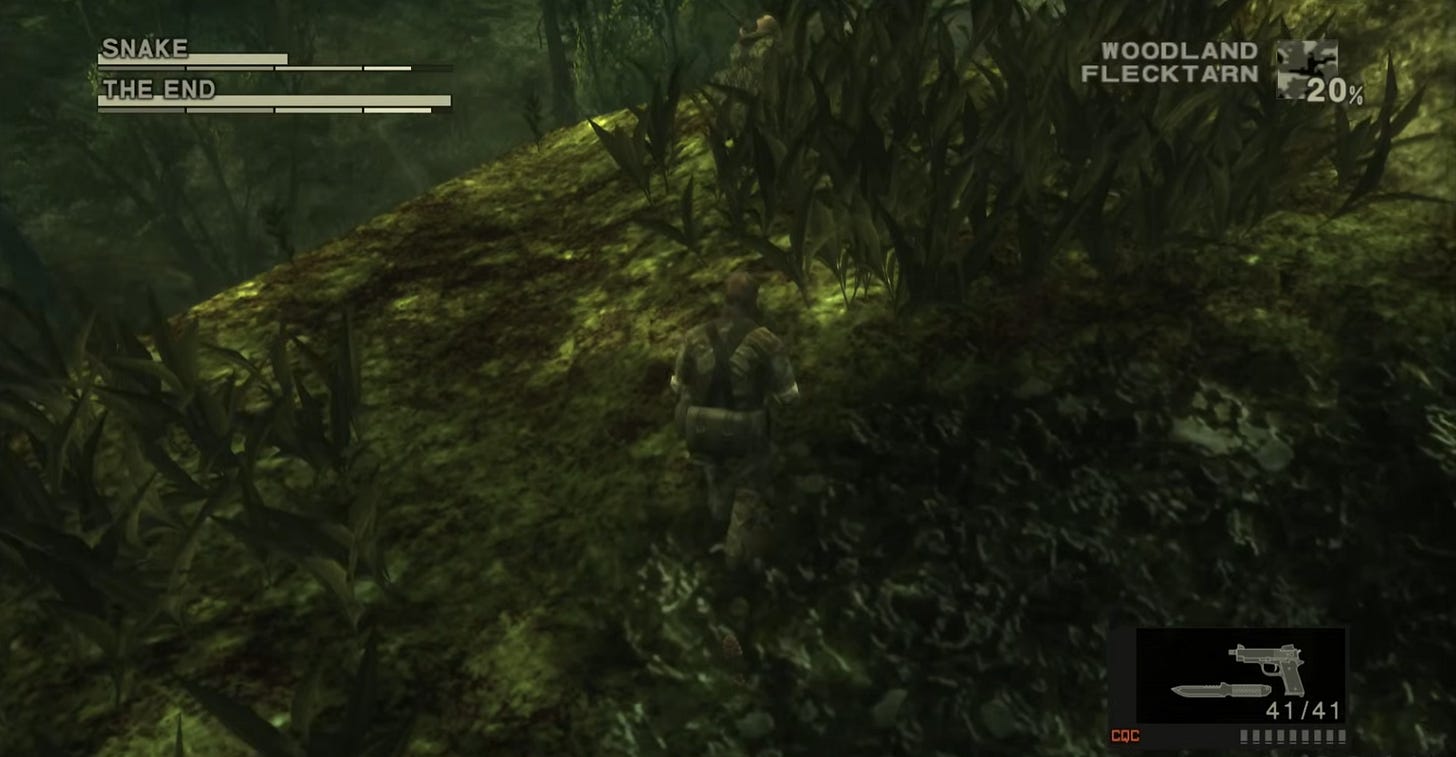Reflecting on The End from Metal Gear Solid 3
"I am The End, I am here to bring you to your ultimate fate."
1963 was a time when a single misstep could start a nuclear war.
Just a year earlier, the Cuban Missile Crisis had pushed the world to the brink. For 13 days in October 1962, the United States and the Soviet Union stood locked in a standoff over missiles stationed in Cuba. Spy planes spotted launch sites. Naval blockades were ordered.
One wrong move, one trigger-happy commander, and it would have been over. Though the crisis ended with a deal, the tension didn’t go away. It hardened.
By 1964, paranoia was routine. Soviet submarines patrolled near the U.S. coast. American U-2 spy planes flew over Soviet airspace. Berlin was split in half by a wall that cut through families, streets, and history.
Inside that backdrop, Snake’s mission begins.
He’s a shadow moving through a world built on secrecy and suspicion. Fear seeps into every choice, shaping how people act, who they trust, and what they’re willing to risk.
I don’t think anything else in Metal Gear Solid 3 captures that feeling better than the now-iconic encounter with The End.
If you enjoy my work and want to support it, consider buying me a coffee. It helps keep the words flowing and the ideas brewing!
Years later, I still remember that moment perfectly. You're walking through Sokrovenno's thick forest and the realization dawns on you. There’s shades of Sniper Wolf again, except this time, I really have no idea where the enemy is.
There’s beauty in the dense forest that surrounds me, impressively so for the PlayStation 2, but there’s also danger. An old sniper, The End, isn't just sitting there waiting in some obvious spot.
He's not following some predictable AI pattern or telegraphing his moves like most video game bosses do. At least, he doesn’t appear to be.
“Is he watching me now,” I’d quietly ask myself.
He's out there somewhere in the trees and shadows, and he knows every inch of these woods. You're basically wandering around his backyard while he's got you in his sights.
That is a terrifying prospect. He could—A gunshot whips across my ears. The crack so loud it leaves my head ringing.
The Theater of Patience
What made The End transcendent wasn't just its technical innovation, though it did feel revolutionary at the time. Kojima Productions created something closer to performance art than traditional gameplay.
A slow-burn psychological thriller where paranoia becomes your closest companion. Every rustle of leaves could be him repositioning. Every glint of sunlight might be his scope catching the light. The forest breathes around you, alive with possibility and menace.
The brilliance lay in subverting every expectation about boss encounters.
Where other games demand aggression and quick thinking, The End rewards patience, observation, and respect for the environment. You learn to read the wind patterns in the grass, to distinguish between the natural creaking of wood and the deliberate crack of a branch under foot.
The game teaches you to be a hunter by first making you the hunted.
The End could be anywhere: prone behind that fallen log, perched impossibly high in the canopy, or simply gone, having relocated while you checked your map. The psychological weight of being observed transforms the player from confident soldier into cautious prey.
It's a fantastic example of environmental storytelling, where the forest itself becomes a character.
But perhaps what makes this battle truly special isn't its technical prowess, it's its humanity. The End is ancient, his reflexes dulled by age, his movements slow and deliberate.
He's not the fastest or strongest opponent Snake faces, but he's the most dangerous because he understands something the others don't: that true mastery comes not from overwhelming power, but from perfect harmony with your environment.
There's something deeply moving about this centenarian warrior, more tree than man, who has found his calling in these woods.
He doesn't fight with the fury of The Fury or the technological superiority of other bosses. He fights with the patience of someone who has all the time in the world, who sees this not as combat but as communion with the forest he's protected for decades.
The optional dialogue where Snake can speak to The End through the radio reveals layers of respect between hunter and hunted. They understand each other in a way that transcends their opposition.
Both are soldiers, both understand the weight of their craft, and both recognize that this dance they're performing, this careful, methodical stalking, is something beautiful and terrible.
How the Mechanics Create the Mood
From a design perspective, The End represents everything that made the Metal Gear series special.
The encounter seamlessly blends multiple gameplay systems: stealth, marksmanship, environmental awareness, and even resource management as you track his movements through stamina and equipment usage. The famous ability to wait a week in real-time for him to die of old age is just so typical of Kojima - a wonderful statement of the nature of patience.
The directional microphone becomes an extension of your senses. The thermal goggles reveal the subtle heat signatures of his footprints. Every gadget in Snake's arsenal finds purpose in this one encounter, creating a symphony of interconnected systems that feel organic and necessary rather than gimmicky.
The multiple environments within the fight, from dense undergrowth to open clearings, each demand different approaches and create natural rhythm changes. Just as you think you've found a pattern, The End forces adaptation, keeping both player and character perpetually off-balance.
But what sticks with you isn't just how clever the mechanics are, but how it makes you feel. I think The End is something you don't see much in games anymore, a boss that actually makes you slow down and sit with the tension.
No minimap telling you where to go, no constant radio updates breaking the mood. It is an experience. An event.
It's just you wandering through this massive forest, knowing that somewhere out there is this legendary sniper who's probably already got you lined up in his scope.
When you finally beat him, whether you out-snipe him or just wait for old age to do the work, it actually means something. You've spent all that time learning to read the forest like he does, moving the way he moves, thinking like he thinks.
When all is said and one, you walk away with some of that skill, like he passed it on to you.
A Perfect Moment
The End works because it understands that the best boss battles aren't just tests of skill, but conversations between designer and player, mediated through challenge and discovery.
It’s Kojima asking, what does it mean to be a hunter? What does it mean to have patience in a medium built on immediate gratification? What does it mean to respect your opponent even as you seek to defeat them?
Is the gaming industry increasingly focused on spectacle and speed? Perhaps. Perhaps I’m biased too, though I can’t help shake off the feeling that The End remains a quiet masterpiece of design philosophy.
It reminds us that sometimes the most profound experiences come not from overwhelming the player with stimulus, but from creating space for tension, anticipation, and the exquisite anxiety of being truly, completely outmatched by an environment and its guardian.
The old sniper understood something that many games still struggle with: that the most memorable battles aren't always the loudest ones, but the ones that change how you see the world around you.
In those sun-dappled woods of Sokrovenno, stalking and being stalked by a century-old ghost, we learned that patience isn't just a virtue.
And somewhere in that memory, The End is still waiting, rifle trained on a patch of forest where a soldier might emerge, ready to teach that lesson to anyone brave or foolish enough to enter his domain.
If you enjoy my work and want to support it, consider buying me a coffee. It helps keep the words flowing and the ideas brewing!











Awesome write-up Chris! Thanks for sharing!
I really need to jump back into MGS3 again at some point. The last (and only) time I played it was on my PS2 years ago, and I have the HD collection somewhere, but I really need to play through it again soon!
Love what you said with this: "Where other games demand aggression and quick thinking, The End rewards patience, observation, and respect for the environment." As well as the other things you said with the design aspects of The End and the game in general!
It really was an amazing gaming experience with the Metal Gear series to think outside the box to progress through them. The design wasn't just a "run-n-gun" style, but really demanded of you to critically think from the enemy's perspective, as well as to overcome challenges in unique ways. And for me, this style of design led to incredibly memorable moments, more so than most other games! This write-up made me remember how unique and memorable this particular boss was, and all the while, I totally forgot about being able to literally wait seven days for him to die too 😂
Great write-up, and thanks again for sharing!